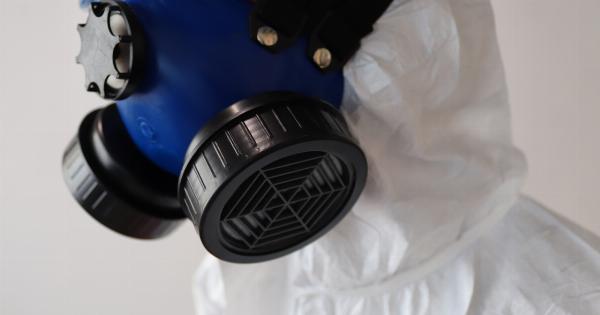Air pollution is a significant health concern globally, and it affects everyone, young and old alike. Children, however, are most vulnerable to the effects of air pollution.
The World Health Organization (WHO) estimates that around 1.8 billion children, globally, are exposed to polluted air daily. This exposure can cause respiratory problems, heart diseases, and even cancer. It is, therefore, essential to find practical ways to protect children from air pollution, and one of the most effective ways is by planting trees around playgrounds.
The Impact of Air Pollution on Children’s Health
Children are more susceptible to the effects of air pollution than adults because their respiratory systems are still developing, and they breathe more air per unit of body weight compared to adults.
According to WHO, air pollution is responsible for the deaths of about 600,000 children under the age of five annually.
Air pollution can cause several health problems in children, including:.
- Asthma: Air pollution can trigger asthma attacks in children who have pre-existing asthma.
- Pneumonia: Children who are exposed to polluted air are more likely to suffer from pneumonia.
- Lowered lung function: Exposure to polluted air can cause reduced lung function, which can affect children’s physical activity levels and overall quality of life.
- Heart diseases: Air pollution can put children at risk of developing heart diseases later in life.
The Role of Trees in Reducing Air Pollution
Trees are effective in reducing air pollution as they act as natural air filters. They absorb carbon dioxide, a greenhouse gas, and emit oxygen, which is essential for human survival.
Trees also trap particulate matter (PM), which is a major source of air pollution.
Particulate matter refers to a mixture of tiny particles, such as dust, dirt, smoke, and chemicals, that are suspended in the air. These particles can penetrate deep into the lungs and cause health problems.
Trees can reduce PM levels by capturing and holding the particles on their leaves and bark, preventing them from entering the air we breathe.
Planting Trees in Playground to Protect Children
Playgrounds are areas where children spend a lot of time playing and engaging in physical activity. They are also situated in urban areas where air pollution levels are high.
Planting trees around playgrounds can provide a natural barrier that protects children from harmful pollutants in the air.
Studies have found that planting trees around schools and playgrounds can reduce air pollution levels by up to 60%. The trees act as a buffer, trapping pollutants before they reach the playground area.
This makes the air around the playground safer and healthier for children to breathe in.
In addition to improving air quality, trees in playgrounds have other benefits. They provide shade, which helps keep children cool during hot days, reducing the risk of heat exhaustion.
Trees also provide a natural habitat for birds and insects, creating an opportunity for children to learn about nature.
Choosing the Right Trees to Plant
When planting trees in a playground, it is essential to choose the right species of trees that can survive in the local climate and soil conditions.
Trees that are native to the area are more likely to thrive, as they have adapted to the local conditions over time. Native trees also provide food and shelter to wildlife and help preserve local biodiversity.
It is important to consider the tree’s size and shape when planting near playgrounds. Trees that grow too tall or have shallow roots can pose a hazard to children and damage nearby structures.
It is, therefore, recommended to choose trees that have a moderate growth rate and strong root systems.
Care and Maintenance of Trees in Playgrounds
Proper care and maintenance of trees in playgrounds are essential to ensure that they thrive and continue to provide the intended benefits. The following are some tips to ensure that trees in playgrounds receive the care they need:.
- Watering: Young trees need regular watering until they establish their root systems. It is essential to water trees deeply, rather than a shallow sprinkle, to encourage roots to grow deeply.
- Pruning: Prune trees to remove damaged or diseased branches and to shape the tree to prevent it from growing too tall or wide.
- Mulching: Apply a layer of organic mulch around the base of the tree to help retain moisture, prevent soil erosion, and suppress weed growth.
- Fertilization: Use slow-release organic fertilizers to provide trees with the essential nutrients they need to grow well.
Conclusion
Planting trees in playgrounds is an effective way to protect children from air pollution. The trees act as natural air filters, reducing levels of particulate matter and other pollutants in the air.
Trees also provide shade, habitat for wildlife, and give children an opportunity to connect with nature. When planting trees in playgrounds, it is essential to choose trees that are native to the area and suitable for the local climate and soil conditions.
With proper care and maintenance, trees in playgrounds can thrive and provide significant benefits to children and the environment.




























